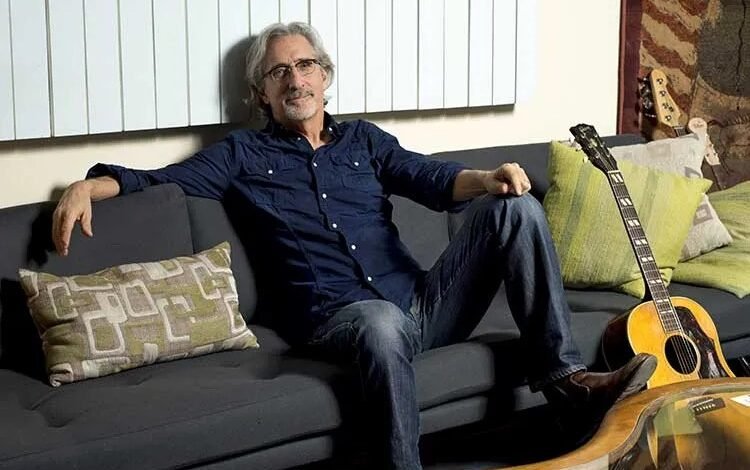“JL’s Hymn No. 2”—Play a Beautiful New Solo Work by John Leventhal

John Leventhal has played many roles in his five-decade career in music—guitarist and multi-instrumentalist, songwriter and composer, arranger, producer, and audio engineer—and has worked with some of the most important popular musicians of the 20th century, from Johnny Cash to Elvis Costello to Dolly Parton to Paul Simon and many others. But it was only recently that the six-time Grammy winner released a debut solo album.
On Rumble Strip, Leventhal shares some of his ideas that had been percolating for years—Americana fare like “That’s All I know About Arkansas,” a song he recorded with his wife, singer-songwriter Rosanne Cash; surprising interpretations of works by American composers Aaron Copland, Samuel Barber, and Bernard Herrmann; and solo guitar originals like “JL’s Hymn No. 2,” transcribed here.
“JL’s Hymn No. 2” is played in a nonstandard tuning, with the sixth and fifth strings tuned down a major third and major second, respectively, to C and G, and a capo at the second fret. In composing the piece, Leventhal didn’t exactly set out to write a hymn; rather, he followed some chordal ideas that emerged in this tuning. “I do like a good hymn and am definitely drawn to that kind of harmonic motion,” he says. “And I have always been drawn to music that can look sorrow straight in the eye but still leave you with hope.”
In learning the piece, it’s best to first hone in on the chord shapes, some of which might be unfamiliar due to the tuning. Then, focus on the somewhat intricate, syncopated rhythms—if needed, feeling the beat in eighth notes, rather than quarters. Note that part of what makes the piece sound so relaxed and flowing is the degree of improvisation that Leventhal brings to the rhythms and other details; as seen in his video performance, he never plays it quite the same way.
The piece ends with a big element of surprise—a chord labeled here as Ebadd#5, which can also be seen as a G major triad superimposed on an Eb major triad. “I love a lot of early-to-mid-20th-century composers—Stravinsky, Copland, Ives, Barber, and others—where this kind of harmony is ubiquitous,” Leventhal says. “I also like putting a little surprise dissonance in harmonious music—as if to say, ‘Don’t get too comfortable.’”
Due to copyright restrictions, we are unable to post notation or tablature for this musical work. If you have a digital or physical copy of the May/June 2024 issue of Acoustic Guitar magazine, you will find the music on page 56.
This article originally appeared in the May/June 2024 issue of Acoustic Guitar magazine.





